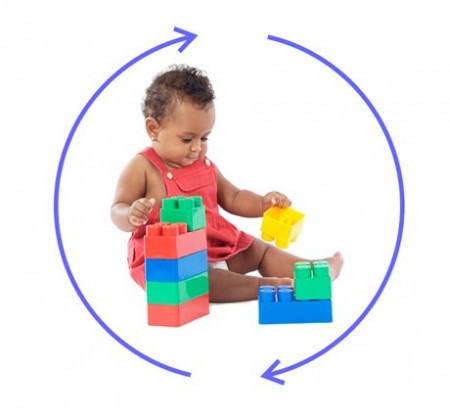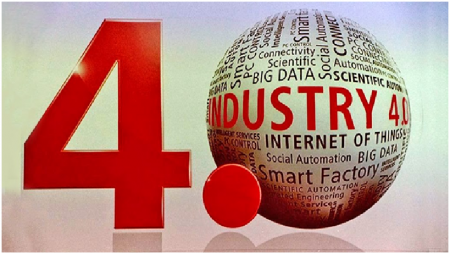April 4, 2016 – The President of Canada’s University of Waterloo, Feridun Hamdullahpur, gave a speech last week to the Economic Club of Canada in which he described how post-secondary learning needs to adapt to the 4th Industrial Revolution. In it he saw universities as an important part of the mix to “give our students, our communities, our industries, and our country a sustainable competitive advantage…designed for the 4th Industrial Revolution – the new knowledge economy.”
Canada’s federal budget, announced in March, pledged $800 million CDN to support “clusters…where innovation will happen.” The University of Waterloo is one of those clusters with the Kitchener-Waterloo, Ontario, area somewhat akin to Silicon Valley, in California, with two universities, a community college, Blackberry, the Perimeter Institute, and many new venture high technology startups.
In his speech Hamdullahpur stated, “the traditional university model hasn’t kept up” with the complexities of the 4th Industrial Revolution. He continued, “traditional universities take kids from high school, bolt even more knowledge onto them, and then – in the hope they’ve matured by graduation day – let industry sort them out as they start their careers.” He further states that this type of learning model although replicable, “takes too long” in today’s world of continuous disruptive change.
How University of Waterloo intends to address the current state of post-secondary learning is “to wrap the student experience in three enriching layers: entrepreneurship, exposure to research, and co-operative education.” For the university to become an accelerated incubator capable of being thought leader in driving disruptive change it means creating learning disciplines not reflected in current curricula. It means tackling the hot button fields of the 21st century such as genomics, robotics, artificial intelligence, biomedicine, quantum science, and renewable energy, combining theoretical underpinnings with a dynamic research focused environment aimed at creating new technological solutions. It means creating a collaborative environment that brings industry into the mix.
For Hamdullahpur the gauntlet thrown is to have universities disrupt themselves. In his concluding remarks he stated, “students know the world is changing. They want to be relevant not just today, but 20, 30, 40 years from now. They know they’re inheriting an economy — and career prospects — defined by volatility and technology.” The ultimate goal as he foresees it is to make post-secondary education “disruption-proof.”
But starting to educate for the 4th Industrial Revolution in the world of post-secondary institutions seems to be coming to the 21st century table a bit late in the process. It is in the world of elementary and high schools where young people can begin to build learning skills necessary to master the 4th Industrial Revolution. What are these skills:
The World Economic Forum has defined them as follows:
- Complex Problem Solving
- Critical Thinking
- Creativity
- People Management
- Coordinating with Others
- Emotional Intelligence
- Judgment and Decision Making
- Service Orientation
- Negotiation
- Cognitive Flexibility
What amazes me about this list is the lack of traditional curriculum content, the three Rs: reading, writing and ‘rithmetic. And yet problem solving, critical thinking and creativity all require high levels of these skills.
So what should learning to solve complex problems look like?
Some have called complex problem solving “a field in search of a definition.”
How do you teach it?
How does it differ from problem solving?
Is it that adding the word “complex” removes theory and methodology and replaces it with “oblique” or “outside the box thinking?”
How can you teach that?
One way is to get students to use technology at hand to tackle an issue, exercising their brains just as weightlifting builds muscles. This is called neuroplasticity and it is evident in the way babies learn but lessens as we approach adulthood because we don’t exercise it.
To encourage neuroplasticity have students tackle a challenge that requires them to build simulations or models. Have them observe, analyze and compile data they get from whatever they have built. Then get them to teach others what they have observed and learned. Through this process learning fundamentals get addressed. For example, the challenge may need mathematics, programming skills, and analytical tools to make observations relevant. In this way one can start small and less complex projects and then move to highly complex ones in a similar ascension to moving from primary to secondary grades. In the end students become preeminent complex problem solvers.
I have seen this demonstrated. A number of years ago I was promoting an after-school and camp program, Children’s Technology Workshop (CTW). CTW engaged children with high technology and creative projects. Children could become engineers, create movies, design computer video games, and do animation. The learning method of CTW was “constructionism,” first described by Jean Piaget, the clinical psychologist known for his theory of cognitive development. Later Seymour Papert, an MIT mathematician, computer scientist and educator, built on Piaget’s work. Papert, who authored “The Connected Family: Bridging the Digital Generation Gap” in 1996, and “Mindstorms: Children, Computers, and Powerful Ideas,” in 2007, described a process of learning by building. He saw the dawn of the personal computer as fundamental to the progressive change in a child’s relationship with knowledge.
In Papert’s world through constructionism children learn mathematics because they want to learn it to help them build a LEGO(R) model or design a video game. The reliance on instruction goes away because of self motivation. And the learning really takes hold when the child shares the end product of his or her creation and has to explain it to others.Talking to and with others reinforces the learning.
What Papert is describing is essentially complex problem solving, critical thinking, creativity and people management all in one. That’s not a bad start on the way to building the necessary skill sets young people need to become masters of the 4th Industrial Revolution rather than its victims. And although Hamdullahpur in his speech talked about applying entrepreneurship and co-operative education to post-secondary learning, in my opinion, this seems late in the game. Instead it needs to be incubated well before college and university ensuring that brain’s plasticity gets fully exercised throughout a lifetime.
Related articles across the web













